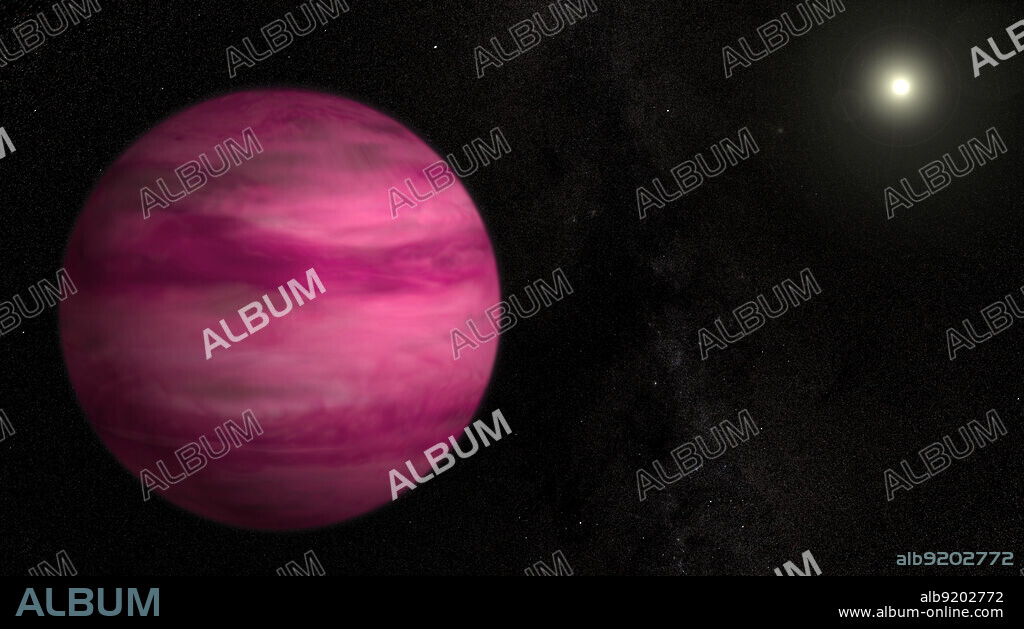alb9202772
Exoplanet GJ 504b

|
Zu einem anderen Lightbox hinzufügen |
|
Zu einem anderen Lightbox hinzufügen |



Haben Sie bereits ein Konto? Anmelden
Sie haben kein Konto? Registrieren
Dieses Bild kaufen

Titel:
Exoplanet GJ 504b
Untertitel:
Siehe automatische Übersetzung
Glowing a dark magenta, the newly discovered exoplanet GJ 504b weighs in with about four times Jupiter's mass, making it the lowest-mass planet ever directly imaged around a star like the sun. Using infrared data from the Subaru Telescope in Hawaii, an international team of astronomers has imaged a giant planet around the bright star GJ 504. Several times the mass of Jupiter and similar in size, the new world, dubbed GJ 504b, is the lowest-mass planet ever detected around a star like the sun using direct imaging techniques. "If we could travel to this giant planet, we would see a world still glowing from the heat of its formation with a color reminiscent of a dark cherry blossom, a dull magenta," said Michael McElwain, a member of the discovery team at NASA's Goddard Space Flight Center in Greenbelt, Md. "Our near-infrared camera reveals that its color is much more blue than other imaged planets, which may indicate that its atmosphere has fewer clouds." GJ 504 b is a Jovian planet in the system of the young solar analog 59 Virginis (GJ 504). Release date August 2, 2013.
Persönlichkeiten:
Bildnachweis:
Album / NASA/Goddard/Scott Wiessinger / Science Source
Freigaben (Releases):
Model: Nein - Eigentum: Nein
Rechtefragen?
Rechtefragen?
Bildgröße:
Nicht verfügbar
Druckgröße:
Nicht verfügbar
Schlüsselwörter:
2010ER JAHRE • 21. JAHRHUNDERT • ASTRONOMIE • GAS • GRAFISCH • ILLUSTRATION • ILLUSTRATIONS • JOVIANO • KUENSTLER • KÜNSTLER • PLANET ALLE • PLANET • WELTRAUM • WISSENSCH.: ASTRONOMIE
 Pinterest
Pinterest Twitter
Twitter Facebook
Facebook Link kopieren
Link kopieren Email
Email
